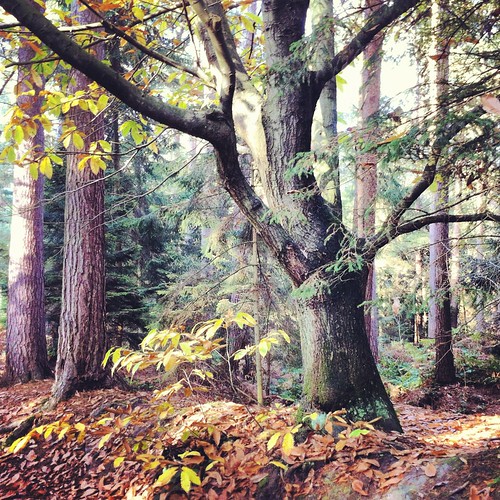Through our trees in trouble series, we’ve examined trees in the Sahel zone in Africa and the United States. This problem, climate change and dying trees, has been seen on every continent, the only exception being Antarctica, due to the lack of vegetation on the frozen continent. Scientists have recently found that there is an alarming loss rate of big, old trees, whose ages range from 100-300+ years, in all latitudes. And both coniferous and deciduous trees are at risk.

- Delamere Forest in England – photo from Flickr, user: andrewoliver2011
Scientists are well aware of the potential implications that climate has on these trees, what they aren’t aware of is the affect that the reduction in forest will have on the world’s ecosystems. Trees act like giant lungs, taking in carbon dioxide and releasing oxygen. Studies have shown that trees take in more than 50% of human-generated carbon dioxide and store it. Therefore, if these big trees continue to die, there’s more carbon dioxide left in the atmosphere, which can lead to additional atmospheric warming. Furthermore, if the trees are dead, they cannot provide the key nutrients, such as nitrogen or seeding, to the surrounding soil to allow the forest to re-establish itself after fire or windstorm.
Forest die-off can also affect things like surface moisture and climate classification. Heat and drought affect each tree species differently, which can result in a long-term shift in the dominant species found in a location. For example, a forest may become grassland. This will also affect soil moisture, as there will be no tree canopy to intercept rainfall or prevent the exposure to harsh sun and wind.
But it goes further than that. Trees provide homes to many different types of animal life, from mammals to birds and reptiles. As the trees die, these animals are forced to look for a new habitat. It is feared that as trees die, so will different species that rely on these old trees.
The GLOBE Program has protocols that can aide in the examination of how these forests are changing. Looking at land cover classification while taking air temperature and precipitation measurements can start the foundation for an exploration between climate change and land cover change. The month of January features a repeat of the Climate and Land Cover Intensive Observing Period (IOP). With that IOP, teachers and students are encouraged to classify their land cover as well as take photographs. By keeping these records over the years, GLOBE schools can contribute to studies following forest mortality.
Suggested activity: Participate in the January Climate and Land Cover IOP by establishing or visiting your land cover site. Submit your photographs and land cover classification to the GLOBE website.
-Jessica Mackaro
